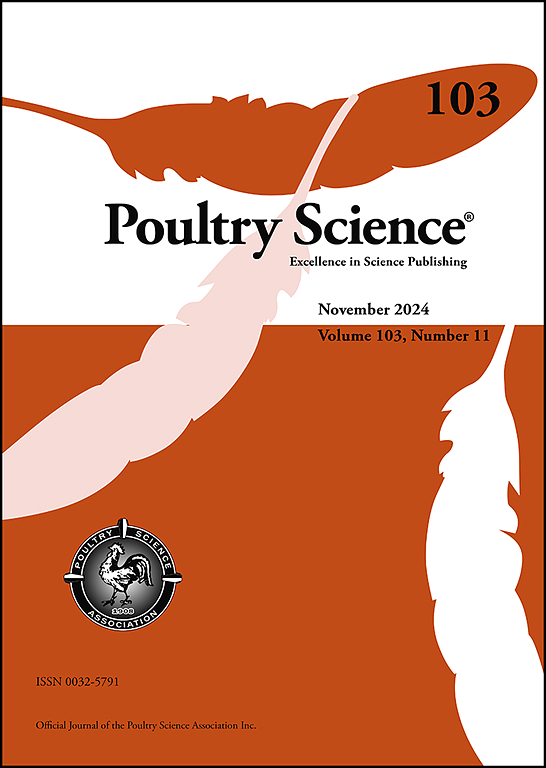Dietary selenium mitigates cadmium-induced apoptosis and inflammation in chicken testicles by inhibiting oxidative stress through the activation of the Nrf2/HO-1 signaling pathway
IF 3.8
1区 农林科学
Q1 AGRICULTURE, DAIRY & ANIMAL SCIENCE
引用次数: 0
Abstract
Cadmium (Cd) is a non-essential heavy metal that is highly toxic to testicle. Selenium (Se) is known to possess antagonistic effects against Cd toxicity, yet the precise mechanisms through which Se counteracts Cd-induced testicular damage in chickens through Nuclear factor erythroid 2-related factor 2/Heme oxygenase-1 (Nrf2/HO-1) signaling pathway, oxidative stress (OS), apoptosis, and inflammation remained unclear. In the present study, the experimental model of chicken testis was established by incorporating CdCl2 and Na2SeO3 into the dietary intake. After 60 days, chickens from each group were euthanized, and testicular and serum samples were subsequently collected. Ultrastructural assessment revealed that Se supplementation significantly mitigated the testicular damage induced by Cd. Se effectively suppressed the Cd-induced elevation in ROS, MDA, and H2O2 levels, while also preventing the downregulation of CAT, GSH, and T-AOC levels. Furthermore, Se administration ameliorated the reduction in the expression levels of Nrf2, HO-1, and Bcl-2 induced by Cd, and counteracted the overexpression of Caspase-3, Bax, Cyt-c, and Caspase-9, TNF-α, IL-2, IL-6, and IL-1β. Meanwhile, immunofluorescence data demonstrated that Se attenuated the Cd-induced decrease in Nrf2 and HO-1 expression and the upregulation of IL-6 expression. In conclusion, this study elucidated that Se might mitigate Cd-induced oxidative stress in chicken testicles through the stimulation of the Nrf2/HO-1 signaling pathway, thereby inhibiting apoptosis and inflammation, and was beneficial in reducing Cd-induced testicular injury.

求助全文
约1分钟内获得全文
求助全文
来源期刊

Poultry Science
农林科学-奶制品与动物科学
CiteScore
7.60
自引率
15.90%
发文量
0
审稿时长
94 days
期刊介绍:
First self-published in 1921, Poultry Science is an internationally renowned monthly journal, known as the authoritative source for a broad range of poultry information and high-caliber research. The journal plays a pivotal role in the dissemination of preeminent poultry-related knowledge across all disciplines. As of January 2020, Poultry Science will become an Open Access journal with no subscription charges, meaning authors who publish here can make their research immediately, permanently, and freely accessible worldwide while retaining copyright to their work. Papers submitted for publication after October 1, 2019 will be published as Open Access papers.
An international journal, Poultry Science publishes original papers, research notes, symposium papers, and reviews of basic science as applied to poultry. This authoritative source of poultry information is consistently ranked by ISI Impact Factor as one of the top 10 agriculture, dairy and animal science journals to deliver high-caliber research. Currently it is the highest-ranked (by Impact Factor and Eigenfactor) journal dedicated to publishing poultry research. Subject areas include breeding, genetics, education, production, management, environment, health, behavior, welfare, immunology, molecular biology, metabolism, nutrition, physiology, reproduction, processing, and products.
 求助内容:
求助内容: 应助结果提醒方式:
应助结果提醒方式:


